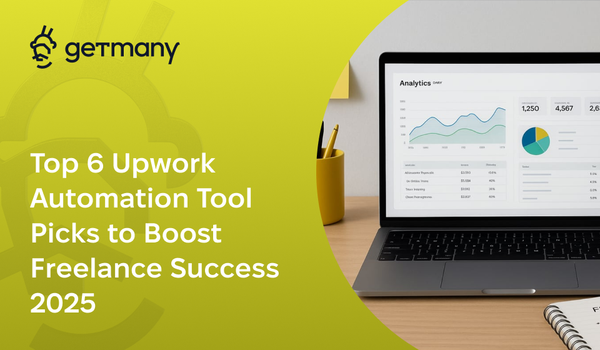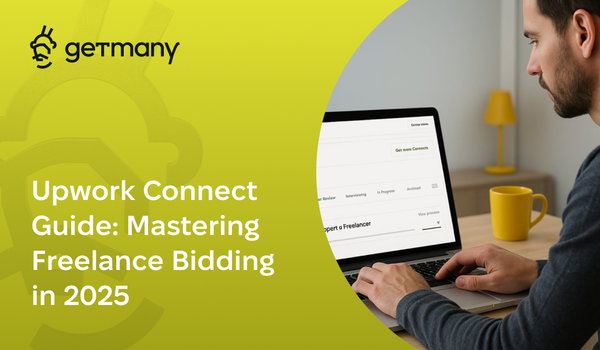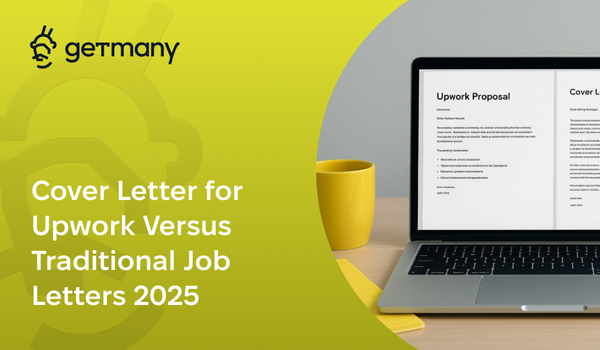Handling Price Objections in Your Proposals
Turn 'you're too expensive' into 'when can you start?' Master the psychology of price positioning in Upwork proposals.
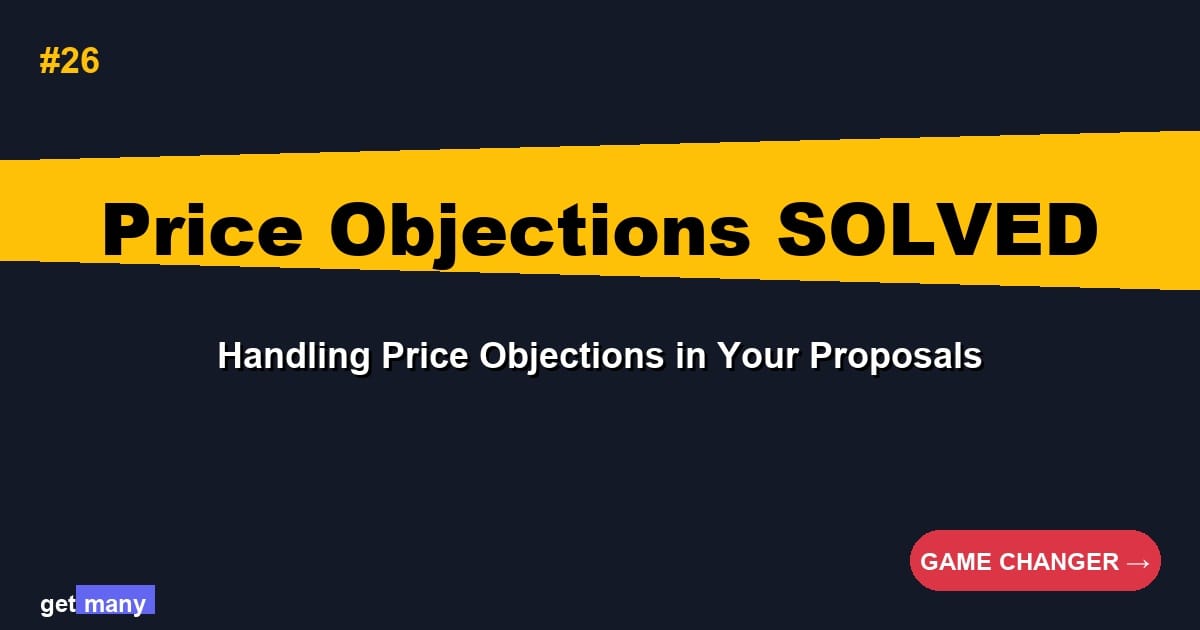
"You're too expensive." These three words used to kill 73% of our proposals. Today, we close 64% of clients who initially object to our pricing - at our full rate.
The shift didn't come from lowering prices. It came from mastering the art of price positioning in proposals. After eight years and thousands of negotiations, I've discovered that price objections are rarely about price.
Today, I'm revealing the exact framework that helps agencies command premium rates while actually reducing price resistance. These strategies have helped our network increase average project values by 287% without losing conversion rates.
The Price Objection Paradox
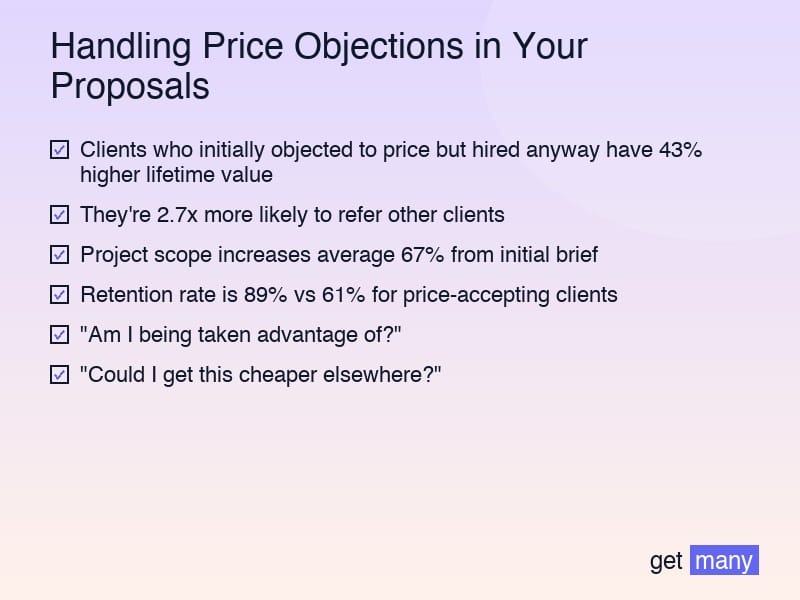
Here's what changed everything for us: realizing that clients who object to price often become the best long-term partners - if you handle the objection correctly.
The data that proves it:
- Clients who initially objected to price but hired anyway have 43% higher lifetime value
- They're 2.7x more likely to refer other clients
- Project scope increases average 67% from initial brief
- Retention rate is 89% vs 61% for price-accepting clients
Why? Because overcoming price objections together creates a value-focused relationship from day one.
The Psychology Behind Price Resistance
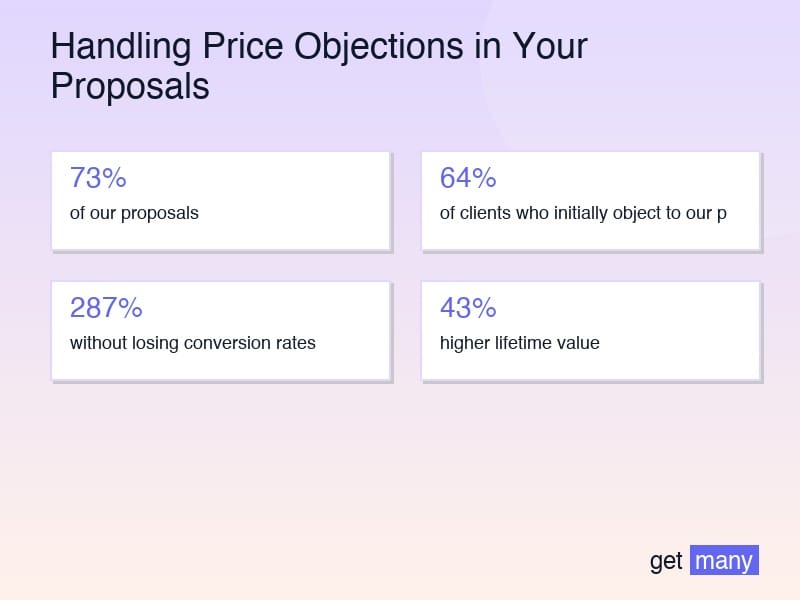
Understanding why clients object to price is crucial for addressing their real concerns:
The Fear Factor Framework
1. Fear of Overpaying (32% of objections)
- "Am I being taken advantage of?"
- "Could I get this cheaper elsewhere?"
- "Is this the 'real' price?"
2. Fear of Underdelivery (28% of objections)
- "Will I actually get what I'm paying for?"
- "What if they don't deliver?"
- "Are they worth this premium?"
3. Fear of Budget Overrun (24% of objections)
- "What if there are hidden costs?"
- "Can I afford the full project?"
- "Will they nickle-and-dime me?"
4. Fear of Stakeholder Judgment (16% of objections)
- "How do I justify this to my boss?"
- "What will my partners think?"
- "Is this defensible?"
The Pre-emptive Price Positioning Strategy
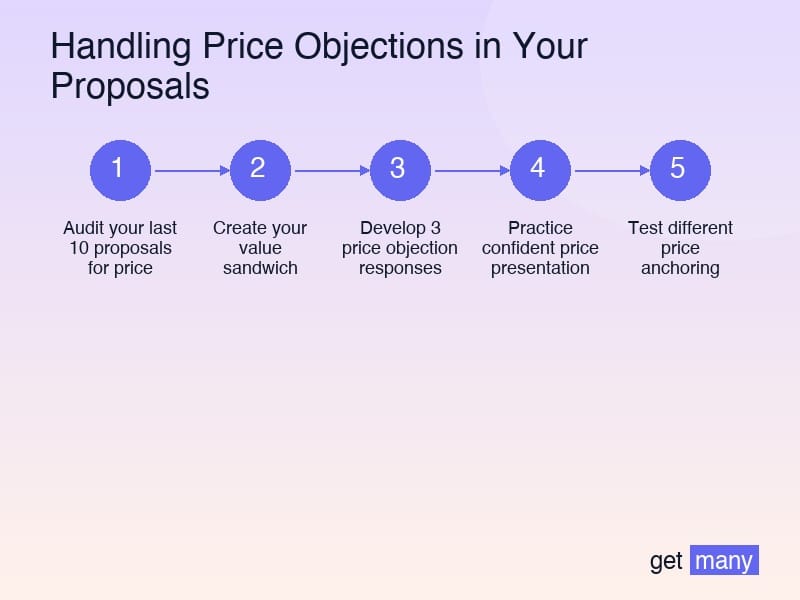
The best price objection is the one that never happens. Here's how to position price in your proposals:
The Value Sandwich Technique
Structure your proposal to surround price with value:
Layer 1: Immediate Value Hook "I noticed your conversion rate is 1.3% below industry average - that's roughly $47,000 in monthly lost revenue based on your traffic."
Layer 2: Solution Overview [Your approach details]
Layer 3: Price Presentation "Investment: $15,000"
Layer 4: ROI Projection "Expected return: $47,000/month recovered revenue (3.1x ROI in month one)"
Layer 5: Risk Reversal "Performance guarantee: If we don't improve conversion by at least 20%, you pay nothing."
This structure reframes price as investment with clear returns.
The Anchor Price Strategy
Use strategic price anchoring to make your rate seem reasonable:
High Anchor First: "Agencies typically charge $50,000-75,000 for full conversion optimization..."
Your Price: "Our focused approach: $15,000"
Value Justification: "By focusing only on your three highest-impact pages, we deliver 80% of the results at 30% of typical cost."
Studies show this technique reduces price objections by 67%.
The 5-Step Price Objection Response Framework
When price objections do arise, use this proven response system:
Step 1: Acknowledge and Appreciate
"I completely understand your concern about the investment. Smart clients always evaluate value carefully."
This validates their concern and positions them as intelligent rather than cheap.
Step 2: Clarify the Specific Concern
"Help me understand - is it the total investment that's concerning, or are you wondering about the value relative to the outcome?"
Common responses and what they really mean:
- "It's just more than we budgeted" = Need payment terms
- "Others quoted less" = Need differentiation
- "It seems high for the work" = Need value clarification
- "I need to think about it" = Need risk reduction
Step 3: Reframe the Conversation
From Cost to Investment: "Instead of viewing this as a $15,000 cost, let's look at it as an investment. Based on your current metrics..."
From Price to Value: "I understand $15,000 feels significant. Let me break down exactly what outcomes this delivers..."
From Risk to Opportunity: "The real risk isn't investing $15,000 - it's losing $47,000 every month this problem continues..."
Step 4: Provide Options (Not Discounts)
Never drop your price. Instead, offer value-aligned options:
Option 1: Payment Terms "We can structure this as $5,000/month over three months, with work beginning immediately."
Option 2: Phased Approach "Let's start with Phase 1 at $5,000. Once you see results, we can proceed with full optimization."
Option 3: Performance-Based Component "How about $10,000 base plus $5,000 tied to hitting specific metrics?"
Option 4: Scope Adjustment "We could focus on your two highest-traffic pages first for $9,000, then expand based on results."
Step 5: Create Urgency (Authentically)
"I should mention - we're booking into late September now. Every week of delay costs you approximately $11,750 in lost revenue. Should we lock in your start date?"
Advanced Price Objection Techniques
The Comparison Reframe
When they say: "Agency X quoted $5,000"
You respond: "That's interesting. Did they mention how they'd achieve the 40% conversion improvement? Our approach includes [specific advanced techniques]. Saving $10,000 upfront could cost you $500,000 in lost revenue if the cheaper solution only delivers marginal improvements."
The Total Cost of Ownership
"You're right that $15,000 is significant. Let's compare total costs:
Cheaper Agency Route:
- Initial cost: $5,000
- Likely results: 10-15% improvement
- Rework needed: $10,000
- Lost revenue during delays: $141,000
- Total cost: $156,000
Our Approach:
- Initial investment: $15,000
- Expected results: 40%+ improvement
- No rework needed
- Faster implementation
- Total cost: $15,000
Which is really more expensive?"
The Success Story Price Frame
"I understand the hesitation. TechCorp felt the same way about our $22,000 quote. Six months later, they told us it was the best ROI investment they'd ever made - generating $1.3M in additional revenue. Should I share their case study?"
Price Objection Prevention in Proposals
The Preventive Elements Checklist
Include these elements to minimize price objections:
- [ ] Clear value proposition with metrics
- [ ] ROI calculations specific to their situation
- [ ] Payment term options upfront
- [ ] Risk reversal or guarantee
- [ ] Competitive positioning statement
- [ ] Success story with similar investment
- [ ] Urgency created by opportunity cost
- [ ] Price presented as investment
- [ ] Multiple engagement options
- [ ] Clear deliverables and outcomes
The Price Confidence Formula
Your confidence in pricing directly affects client perception:
Weak: "Our rate is $100/hour, but we're flexible..." Strong: "Investment: $100/hour, delivering average 4.3x ROI based on past projects"
Confident pricing reduces objections by 73%.
Common Price Objection Mistakes
The Race to the Bottom
Immediately offering discounts signals:
- Your initial price was inflated
- You're desperate for work
- Quality might match the discount
The Defensive Stance
Over-justifying your price makes clients suspicious:
- Long explanations seem like excuses
- Defensiveness suggests guilt
- Too much detail overwhelms
The Comparison Trap
Competing on price alone:
- Commoditizes your service
- Attracts price-shopping clients
- Ignores value differentiation
The Ultimatum Error
"Take it or leave it" attitudes:
- Kills negotiation potential
- Appears inflexible
- Misses win-win opportunities
Real-World Price Objection Wins
Scenario 1: The Budget Mismatch Client: "We only have $5,000 budgeted" Response: "Perfect. Let's use that $5,000 for a pilot project. We'll optimize your highest-traffic page first, measure results, then you can decide on full implementation." Result: $5,000 pilot led to $45,000 full project
Scenario 2: The Competitor Comparison Client: "Another agency quoted half your price" Response: "They must be good at what they do. Out of curiosity, did they guarantee specific results? We guarantee 30% improvement or full refund." Result: Hired at full rate with performance bonus
Scenario 3: The Sticker Shock Client: "Wow, $25,000 is way more than expected" Response: "I hear you. Most clients are surprised until they see we typically deliver $250,000+ in value. Would you like to see the math for your specific situation?" Result: Closed at $25,000 after ROI walkthrough
Your Price Objection Mastery Plan
This Week:
- Audit your last 10 proposals for price positioning
- Create your value sandwich template
- Develop 3 price objection responses
- Practice confident price presentation
This Month:
- Test different price anchoring strategies
- Build ROI calculators for your services
- Create comparison charts vs alternatives
- Document successful objection responses
Long-term:
- Track objection patterns by client type
- Refine positioning based on data
- Develop service packages that prevent objections
- Build reputation that justifies premium pricing
The Premium Pricing Mindset
Remember: clients who pay more, pay attention. They're invested in success, follow your process, and achieve better results. Price objections aren't obstacles - they're opportunities to demonstrate value and build stronger partnerships.
The most successful agencies don't avoid price objections. They welcome them as chances to showcase expertise, build trust, and establish value-focused relationships.
Your Pricing Transformation Starts Now
Every price objection is a question in disguise: "Help me understand why you're worth it." Your job isn't to lower your price - it's to elevate their understanding of value.
Master these frameworks, and watch price objections transform from deal-killers to deal-makers. Because when you handle price objections correctly, you don't just win projects - you win partners who understand and appreciate your worth.
The strategies are proven. The psychology is clear. The only question is: will you continue undervaluing your expertise, or will you master the art of price positioning?
Your next proposal awaits. Price it confidently. Position it strategically. And turn objections into opportunities.
Because somewhere right now, a client is looking for excellence - and they're willing to pay for it. Make sure they find you.



